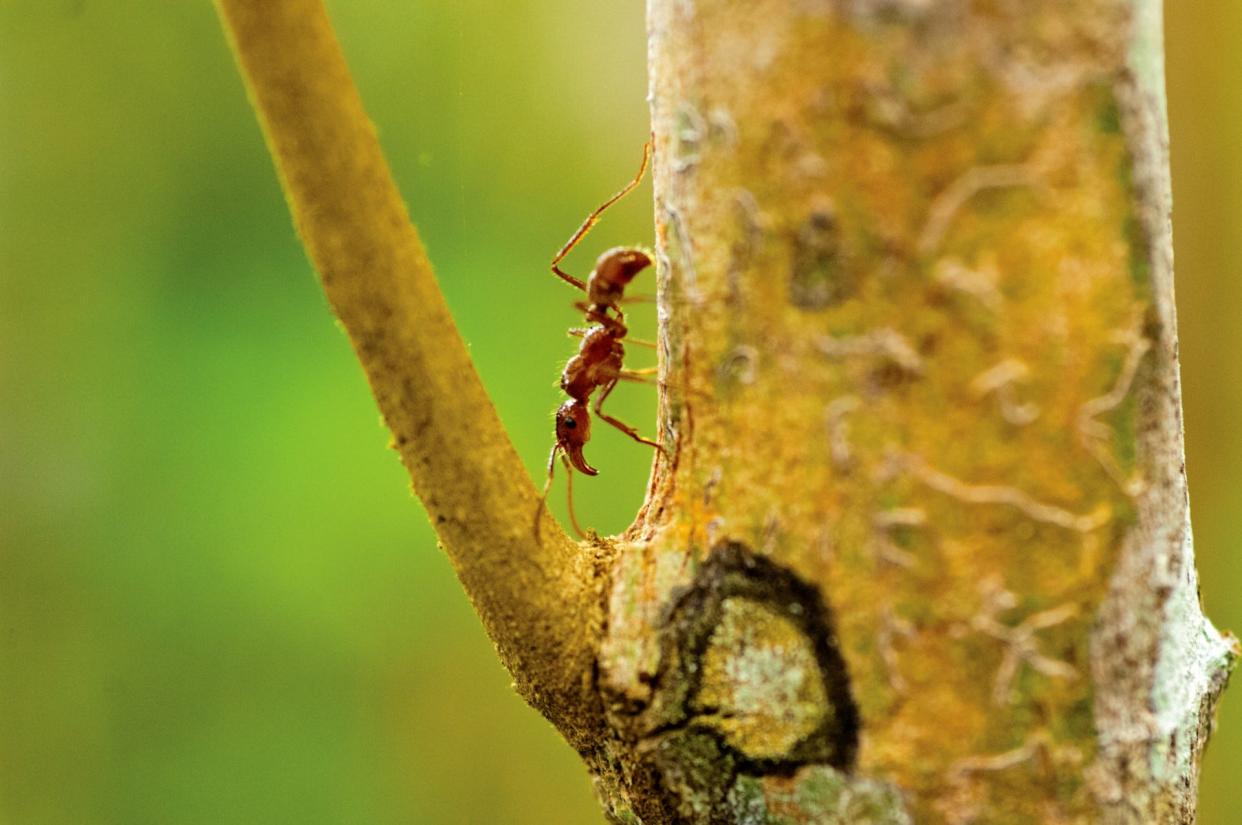Why ants are the unsung heroes of nature

Compared to ants, humans have virtually no history at all.
Ants originated about 170 million years ago. This is a time in which dinosaurs were roaming the Earth.
They survived the big dinosaur extinction and many other globe-changing catastrophes for millions of years. They flourished during a time when all the continents were pushed together in one giant landmass called Pangea.
And they were still there when plate tectonics started to split apart the supercontinent. While those continents moved, the separated ants started to evolve and now there are thousands of different species of ants. Very few of those species cause any harm but we pretty much look at them the same — pesky little creatures.
Importance
You have probably heard that every species has a purpose — even the dreaded tick, mosquito or chigger. Ants are not only an important food for so many other organisms, they literally and continually make life on Earth, as we know it, possible.
First, ants turn over and mix more soil than earthworms. They do this by building huge tunnels for their colonies underground. This constant tunneling allows the soil to be broken up, allowing roots and other insects to navigate underground more easily.
This natural tilling of the land also allows water and nutrients to absorb into the soil instead of running off and being wasted. Ants make Earth greener by acting as trillions of farmers.
Not only do ants till the soil, they also help new plants germinate. Ants spread more seeds than any other organism on Earth. They are so important some plants have evolved to reward the ants so that they continue to help them.
Violets and some other flowers coat their seeds with a substance that ants love. The ants take the seed back to their colony and eat the delicious coating — but not the seed. The seed is now able to germinate in a new place.
There’s more. Peony plants attract ants with a special nectar and, in return, the ants protect the plant’s buds from hungry caterpillars. If the caterpillar ate the buds, the flowers wouldn’t get pollinated and the plant can’t make seeds. Everyone wins — except the caterpillar.
In similar fashion, acacia trees develop hollow shelters for ants, and the ants destroy insects that are harmful to the tree.
Social structure
Ant colonies practice the highest form of animal social organization and are very similar to honeybees in this aspect. If a queen fertilizes an egg, it becomes a female. Unfertilized eggs become males.
Because of that, you can say that male ants have grandfathers but no fathers. Stop and think about that for a minute.
When it is time to mate, all the males leave to try to find queens from another colony. After mating, the males are no longer needed, are not allowed back into the colony and they die. Female ants do all the work for the colony; therefore, every ant that you see is likely a female. Remember — after mating, the males are no more.
Amazing adaptations
Different species of ants have different adaptations and there are some amazing ones. Here are just a few examples:
— Ants learned to farm long before humans. Several species of ants farm a specific fungus by bringing back tiny bits of leaves for the fungus to consume. In return, the fungus provides the ants with important nutrients.
— Trap Jaw ants walk around with their jaws wide open. They are pulled back like a rubber band gun. When prey walks by, the trigger is released and the jaws snap down at 140 miles per hour and dismembers their prey. They can also snap their jaws to propel themselves backward to escape danger.
— Weaver ants carry their young larvae in their mouths and gently squeeze them to make them spit silk. The adults then use that spit-up baby silk to glue leaves together to make nests.
— Polygerus ants have jaws that are so sharp they can’t carry their own larvae without destroying them. After their queen lays eggs, the workers raid nests of other ant species and steal their hard pupae cases and bring them back to their colony. When the kidnapped ants emerge, they take care of the polygerus larvae, not knowing that they were kidnapped.
Hopefully, you have at least a little respect for those little creatures that make so many things we love about Earth possible.
Mike Szydlowski is science coordinator for Columbia Public Schools.
TIME FOR A POP QUIZ
1. What helped so many different ant species evolve?
2. Why can ants be considered Earth’s greatest farmer?
3. Why do male ants only have grandfathers but no fathers?
4. In what ways do ants and plants work together to benefit both of them?
5. Why is it likely that every ant that you have seen is a female?
LAST WEEK’S POP QUIZ ANSWERS
1. How did the snakes become isolated?
Sea level rise caused the land to become isolated.
2. Before humans brought them over, why did lancehead vipers only evolve on the island and not the mainland?
There was no need for the snakes on the mainland to change because they still had plenty of access to rodents.
3. What is a population’s carrying capacity?
The carrying capacity of a population is the number of individuals that could be sustained in a given area.
4. Why was it beneficial for this snake to develop such a powerful venom?
The powerful venom was needed to subdue the birds before they could fly away.
5. What do you think would happen to the viper population if few birds stop migrating to the island?
The viper population would fall.
This article originally appeared on Columbia Daily Tribune: Why ants are the unsung heroes of nature

